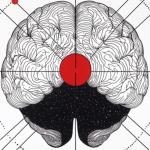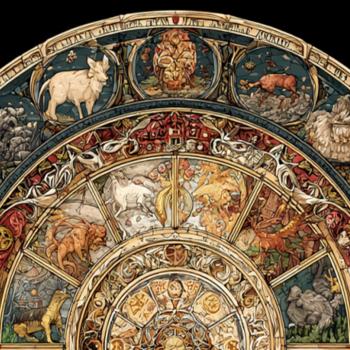
Exploring Ideaspace: The Mysterious Realm of Collective Inspiration
When you delve into human history, a peculiar phenomenon known as “The Law of Dual Discovery” or “The Multiple Independent Discovery Effect” reveals itself. It’s this uncanny trend of two or more individuals, often separated by thousands of miles with no communication, making the same discoveries at nearly the same time. In 1922, William Ogburn and Dorothy Thomas famously compiled a list of 148 scientific discoveries that fit this pattern. From calculus to oxygen, and even the theory of evolution, multiple minds seem to latch onto the same concepts in tandem, suggesting that ideas may not come solely from within us. So, what’s going on here?
This strange synchronicity has stirred up some compelling theories, notably the concept of “Ideaspace.” If true, Ideaspace could be the mysterious source from which ideas emerge, a place accessed by the human mind through dreams or states of inspiration. The theory resembles an ancient concept, one that aligns closely with the visions of Plato and Carl Jung. Both philosophers proposed that there exists a realm outside ordinary perception—a dimension of perfect ideas, archetypes, and shared human symbols.
Ideaspace and the Collective Unconscious
Let’s start with Plato, who theorized about an Ideal Form, a realm where all true ideas exist unchanging. This realm held the “perfect” version of everything we experience in our material world. Later, psychologist Carl Jung explored a similar concept, the “Collective Unconscious.” According to Jung, the Collective Unconscious is the inherited reservoir of human experience, housing archetypes and universal symbols that influence us without our awareness. This concept suggests we’re not blank slates but instead are steeped in ancient, inherited memories that frame our conscious experience.
In Jung’s words, “the collective unconscious comprises in itself the psychic life of our ancestors right back to the earliest beginnings.” This mysterious mental layer may explain why certain ideas appear simultaneously across individuals and cultures. Perhaps these “primordial images” are what inspire multiple individuals at once to make strikingly similar discoveries. While it’s still up for debate whether Ideaspace and the Collective Unconscious are one and the same, the notion that we’re tapping into an unseen reservoir of ideas resonates with both.
The Mechanics of Ideaspace
But how exactly does one “tap into” Ideaspace? Science fiction writer Rudy Rucker offers a poetic analogy in his essay “Life as a Fractal in Hilbert Space.” He suggests that Ideaspace exists beyond waking reality, reachable only through imagination or dreams. According to Rucker, Ideaspace might operate like a broadcast frequency, a subtle wave accessible to minds tuned to receive it. When multiple minds hit the right “frequency,” they become conduits for the same concepts, bringing similar discoveries back to the real world.
To put it simply, when an idea is “ripe,” multiple people are bound to tune into it and bring it forth. It’s as if Ideaspace is always humming with possibility, waiting for the right minds to reach out and connect. This mystical notion aligns beautifully with the experiences of creatives like musician Jean Baptiste, who likens his creative flow to dipping into a “current of consciousness.” He feels that the music “is always there,” an endless stream of ideas ready to be grasped, where he can connect with something beyond himself and channel it to the audience.
A Divine Dance: Creativity and Ideaspace
Could it be that each time we open ourselves to creative inspiration, we are interacting with a dimension beyond ourselves? Baptiste describes this act as a “gift” to the audience, a moment of true freedom that allows him to move beyond judgment and ego. And isn’t this what artists, musicians, scientists, and innovators experience when they say ideas just “come” to them?
There’s a profound spiritual parallel here. If Ideaspace is real, perhaps it’s a way of glimpsing the Divine, a shared mind, or as some might call it, God. By setting aside personal expectations and surrendering to the flow of creativity, we engage with a force greater than our individual selves. Keith Giles, who often writes about spiritual concepts, might frame this act of surrender as a form of collaboration with the Spirit of Truth, a dance that transcends earthly confines and reaches toward the divine mystery itself.
The Mystery of Ideaspace
This idea—that ideas are neither isolated nor confined—invites a tantalizing question: where do ideas actually come from? Could Ideaspace be the mind of God, shared among us in fragments? It’s no wonder the theory of Ideaspace intrigues thinkers across disciplines, from philosophers to physicists. If this realm exists, it suggests that discovery is not only a product of human effort but also of universal timing and connectivity.
Imagine, then, that all of humanity is connected through an invisible web of shared thought, each of us a potential receiver for the next big idea waiting to break into consciousness. It’s a vision that gives creativity a much larger meaning, showing us that our individual contributions are part of a greater human tapestry. In the end, whether or not Ideaspace is scientifically provable may not matter as much as the wonder it inspires.
Conclusion: Embracing Ideaspace
What if Ideaspace exists? It challenges us to view our creative moments as a bridge to something greater, a shared reservoir of all human thought that reminds us of our interconnectedness. Perhaps, then, every great idea or discovery isn’t a result of personal genius but of attuning oneself to the divine symphony that has been playing since the dawn of time.
Isn’t it humbling to think that each inspiration, each breakthrough, is part of a larger, cosmic design? The next time you’re hit with a brilliant idea, consider it might just be your mind reaching into Ideaspace, plucking from a collective consciousness that has always existed. Embrace it, share it, and join the timeless dance of creativity that has connected humanity across millennia.
**

The newest book from Keith Giles, “The Quantum Sayings of Jesus: Decoding the Lost Gospel of Thomas” is available now on Amazon. Order HERE>
Keith Giles is the best-selling author of the Jesus Un series. He has appeared on CNN, USA Today, BuzzFeed, and John Fugelsang’s “Tell Me Everything.”
He co-hosts The Heretic Happy Hour Podcast and his solo podcast, Second Cup With Keith which are both available on Spotify, Amazon, Apple, Podbean or wherever you find your podcast fix.













